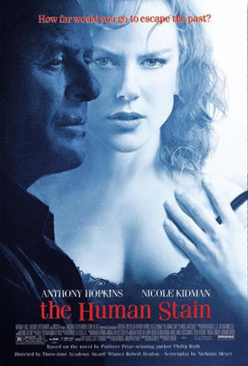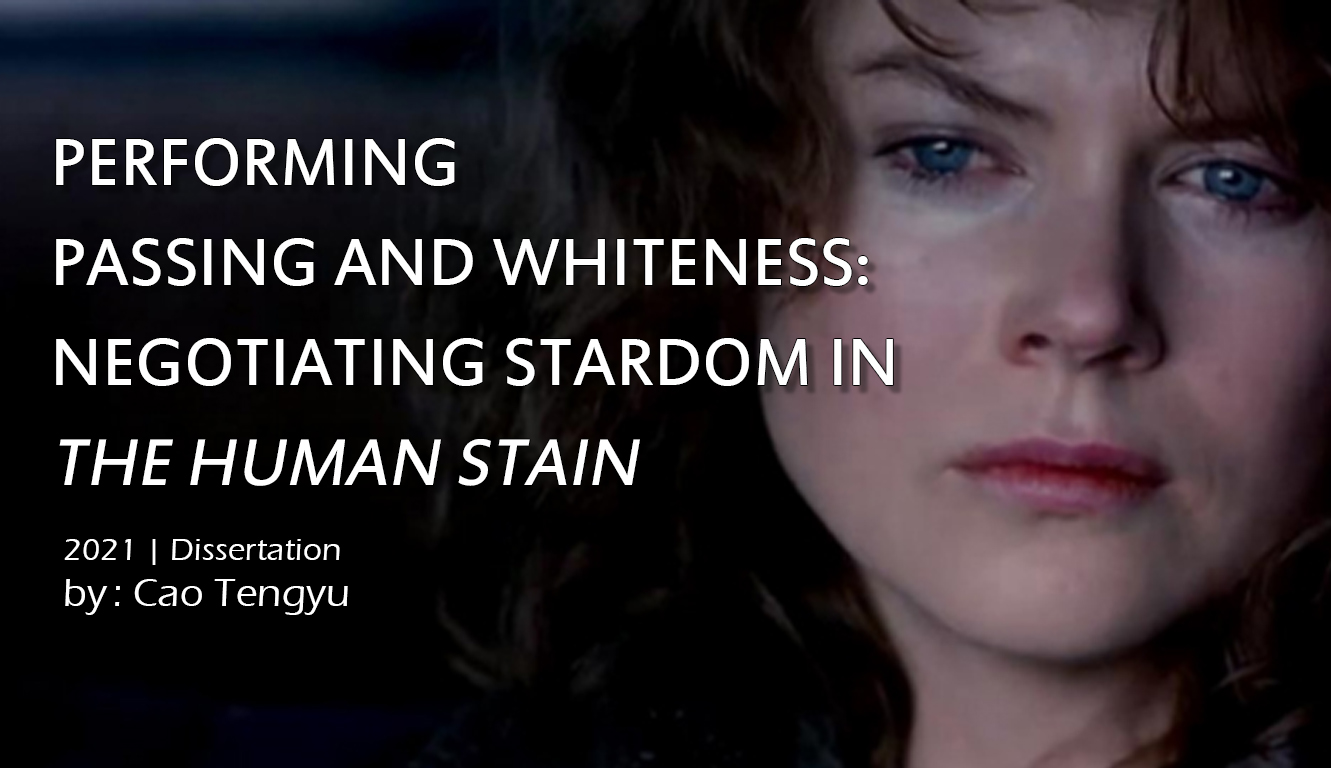Introduction
 Examining The Human Stain (2003) through the lens of adaptation, stardom and whiteness discourses, this dissertation (1) foregrounds the necessity of a textual-based and aesthetic reading to connect the source and the adaptation, revisiting the dilemma of representing race and passing in a visual medium; (2) simultaneously defends and critiques the efficacy and ethics of stars’ white bodies, performances and persona issues in production and circulation in nexus with medium specificity; (3) unravels the anxiety of vision in regard to white (in)visibility as examined in whiteness studies by white scholars, focusing on the representation of senses and narrativities; and (4) incorporates two film stars’ interviews and reviews to trace the displacement of white transparency and neutrality.
Examining The Human Stain (2003) through the lens of adaptation, stardom and whiteness discourses, this dissertation (1) foregrounds the necessity of a textual-based and aesthetic reading to connect the source and the adaptation, revisiting the dilemma of representing race and passing in a visual medium; (2) simultaneously defends and critiques the efficacy and ethics of stars’ white bodies, performances and persona issues in production and circulation in nexus with medium specificity; (3) unravels the anxiety of vision in regard to white (in)visibility as examined in whiteness studies by white scholars, focusing on the representation of senses and narrativities; and (4) incorporates two film stars’ interviews and reviews to trace the displacement of white transparency and neutrality.
Experience at MALCS
The learning journey at MALCS introduced me to the most wonderful teachers who have provided me with professional academic guidance, sparkling inspirations ad unconditional support. Their passion fuels my urge to have a wider grasp and deeper penetration of literary, film and cultural studies, pushing me to move from a keen movie-goer and reader to a more dedicated and reflexive learner. Harboring the habit of reading, thinking and writing has greatly attributed to my transient and irreplaceable encounter with MALCS!

